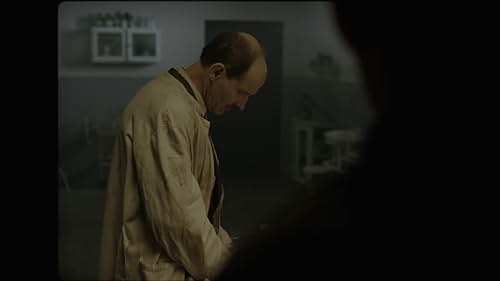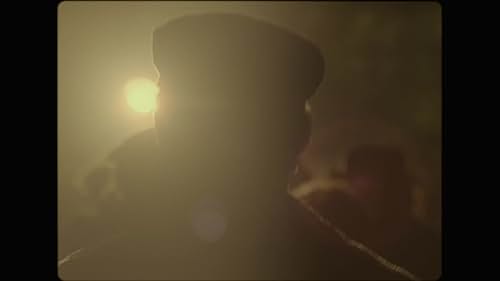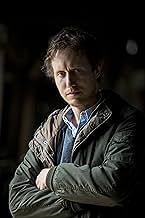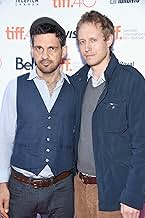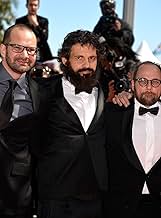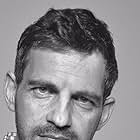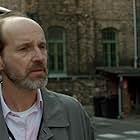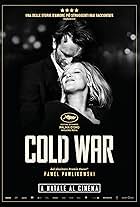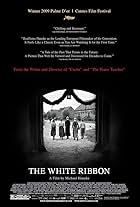Film ambientato tra gli orrori di Auschwitz del 1944 in cui un prigioniero, costretto a bruciare i cadaveri della sua stessa gente, trova un motivo per sopravvivere cercando di salvare dalle... Leggi tuttoFilm ambientato tra gli orrori di Auschwitz del 1944 in cui un prigioniero, costretto a bruciare i cadaveri della sua stessa gente, trova un motivo per sopravvivere cercando di salvare dalle fiamme il corpo di un ragazzo che crede sia suo figlio.Film ambientato tra gli orrori di Auschwitz del 1944 in cui un prigioniero, costretto a bruciare i cadaveri della sua stessa gente, trova un motivo per sopravvivere cercando di salvare dalle fiamme il corpo di un ragazzo che crede sia suo figlio.
- Vincitore di 1 Oscar
- 65 vittorie e 61 candidature totali
Trama
Lo sapevi?
- QuizDuring the preparation, director László Nemes, cinematographer Mátyás Erdély and production designer László Rajk made a pledge to stick to certain rules, or a "dogma", which included:
- The film cannot look beautiful.
- The film cannot look appealing.
- We cannot make a horror film.
- Staying with Saul means not going beyond his own field of vision, hearing, or presence.
- The camera is his companion, it stays with him throughout this hell.
- BlooperThe short text at the beginning says, that the members of the 'Sonderkommando' were killed after 3 months, but this is a simplification of the more complicated history. While it's correct that these men were supposed to be killed and replaced after a few months, in some cases they were killed much earlier and in other rare cases they could survive for over 2 years, like Filip Müller. This depended mostly on the skills of the individual 'Sonderkommando' slave worker, who was sometimes needed by the SS to train the new 'Sonderkommando' members, but also on pure coincidence and luck.
- Citazioni
Abraham Warszawski: You failed the living for the dead.
Saul Ausländer: We are dead already.
- ConnessioniFeatured in 73rd Golden Globe Awards (2016)
- Colonne sonoreDream Faces
Written by William Marshall Hutchison
Performed by Elizabeth Spencer
"Son of Saul" tells the story of Saul Ausländer, a Hungarian member of the Sonderkommando, the group of Jewish prisoners isolated from the camp and forced to assist the Nazis in the machinery of large- scale extermination. In October 1944, Saul discovers the corpse of a boy he takes for his son. As the Sonderkomando plans a rebellion, Saul decides to carry out an impossible task.
Its direction like Nemes that should make the world very optimistic about the future of cinema. If we have filmmakers like him, getting in the trenches of history and the human spirit, and beckoning its awakening into our souls, we should be so lucky to have him display the beauty and evil of the world in such a provocative and engaging manner. His choices in which to shoot the film, and portray one of the most heinous acts in the history of our existence is just downright scintillating. "Son of Saul" plays as if we're watching a disturbing, noxious, and depraved home movie about a time in which we never want to see. From a near first-person perspective, we enter the revolting world of Auschwitz-Birkenau. He uses out of focus camera work, to not bath in the bloodshed, but wallow in the psyche of a man, that is desperate for purpose. It's the single best direction of the year. I'd go so far to say this could be the single best direction seen this decade. His script, along with co- writer Clara Royer, is so painstakingly simple but echoes decades of oppression in its short, respectful run time.
Don't call him a "poet by profession" because newcomer Géza Röhrig doesn't believe in the word profession. There's only artists. Géza Röhrig is an artist, of which I haven't seen in some time. With little words, he says countless and devastating things about what he's feeling and what we know about ourselves. He doesn't use cheap tricks to engage the audiences like "really intense face" or "really scared moving." Röhrig displays the numb, almost disengaged weight of the world in every physical and vocal movement he chooses to exhibit. It's a flawless, masterful performance that we need more of in this cinematic world.
Cinematographer Mátyás Erdély is your next great craftsman to watch, even though making his mark on films like "The Quiet Ones" and "Miss Bala." He frames close-ups that Danny Cohen himself, would hope to achieve in his next collaboration with Tom Hooper. He stays with a person, a scene, a moment, so intelligently, and so vibrantly, he places each one of us in the rooms, full of fear, and full of hopelessness. The subtle yet effective music by László Melis is sonorous but the Sound team is what really needs their praise. Tamás Dévényi (Production Soundmixer), Tamás Székely (Sound Editor), and Tamás Zányi (Sound Designer) create monstrous and dynamic effects that essentially become its own focal point of the story. We are listening intently, desperately, and just fearful at every nick, boom, and cry we come in contact with. It's something everyone should and will notice and applaud.
"Son of Saul" sneaks up on you. It's too important and critical to our cinematic landscape to overlooked or forgotten. I can't imagine a more dour and sullen experience this year that fills my heart with this much adoration. It stands toe-to-toe with most Holocaust films created in and before my lifetime. It may be the definitive one this millennium.
- ClaytonDavis
- 4 ott 2015
- Permalink
I più visti
- How long is Son of Saul?Powered by Alexa
Dettagli
- Data di uscita
- Paesi di origine
- Siti ufficiali
- Lingue
- Celebre anche come
- Son of Saul
- Luoghi delle riprese
- Mafilm, Budapest, Ungheria(Studio)
- Aziende produttrici
- Vedi altri crediti dell’azienda su IMDbPro
Botteghino
- Budget
- 1.500.000 € (previsto)
- Lordo Stati Uniti e Canada
- 1.777.043 USD
- Fine settimana di apertura Stati Uniti e Canada
- 37.930 USD
- 20 dic 2015
- Lordo in tutto il mondo
- 6.659.121 USD
- Tempo di esecuzione1 ora 47 minuti
- Colore
- Mix di suoni
- Proporzioni
- 1.37 : 1
Contribuisci a questa pagina




